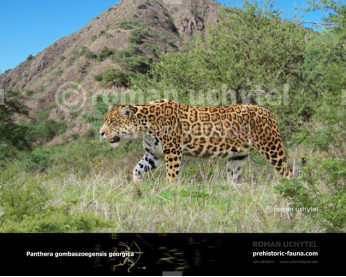Pleistocene South American jaguar (Panthera onca mesembrina)
247247Patagonian panther, Pleistocene South American jaguar, Panthera onca mesembrina (Panthera onca mesembrina Cabrera, 1934)
?Panthera onca palustris
Order: Carnivora
Family: Felidae
Genus: Panthera
Species: P. onca
Dimensions: length - 1,5 m, height - 90 сm, weight - 80-170 (max 230) kg
Temporal range: during the Pleistocene epoch (1.8 mya—11,000 years ago) (North and South America)
Panthera onca mesembrina, commonly known as the Pleistocene South American jaguar, is an extinct subspecies of the jaguar that was endemic to South America (Patagonia) during the Pleistocene epoch (~0.016–0.012 years ago).
It is known from several fragmentary specimens, the first of which found was in 1899 at "Cueva del Milodon" in Chile. These fossils were referred to a new genus and species "Iemish listai" by naturalist Santiago Roth, who thought they might be the bones of the mythological iemisch of Tehuelche folklore. A later expedition recovered more bones, including the skull of a large male that was described in detail by Angel Cabrera in 1934. Cabrera created a new name for the giant felid remains, Panthera onca mesembrina, after realizing that its fossils were near-identical to modern jaguars’.
The bones of P. onca mesembrina are nearly double the size of the largest living jaguars (P. onca onca), and estimates place it at over 231 kilogram in weight. This would make it the largest jaguar and one of the heaviest known felids. P. onca mesembrina was carnivorous and hunted a variety of large mammals, including the ground sloth Mylodon, horse Hippidion, and camelid Lama.
The trend of large body size among Pleistocene felids was likely due to a multitude of factors such as: prey size, environmental conditions of the epoch, and, for P. onca mesembrina specifically, Bergmann's Rule. A similar trend of gigantism is observed in the North American subspecies P. o. augusta, which was around 15-20% larger than modern jaguars at around 190 kilograms.
The holotype of Panthera onca mesembrina preserved a shallow irregular pit on the lateral surface on the maxilla; this represents a puncture made by the canine of another jaguar, which healed during life. As George Simpson pointed out in 1941, all extant collected specimens with these punctures were males and no females with such scars have been found. The presence of this wound suggests that the specimen was a male based on this common social behavior between living male jaguars.
At Cueva del Milodon, fossils of the ground sloth Mylodon, horse Hippidion, and camelids have been found with tooth and scratch marks that match the teeth of P. onca mesembrina. Based on isotopic analyses, P. onca mesembrina preferred to hunt Hippidion and Lama, as well as juveniles of larger mammals like Mylodon.
Modern jaguars and cougars are able to drag their kills long distances, which P. onca mesembrina was likely capable of as well. The discovery of isolated herbivore bones in largely carnivore-occupied dens in other caves supports this as they were likely kills taken to be eaten. Cueva del Milodon, however, was a frequent nest of Mylodons based on the occurrence of juvenile and newborn Mylodon individuals. It is possible that it was a recurring hunting spot for P. onca mesembrina due to this. Some of the prey items reached great sizes, such as a skull from a 3–4 metres long Mylodon that bears several bite marks. Coprolites containing Mylodon dermal ossicles were found there, which were likely defecated by P. onca mesembrina.
The majority of sites where P. onca mesembrina has been found in Argentina and Chile are very open and arid, contrasting to the lush rainforest habitats of modern jaguars. This conclusion is backed by their diets, with P. onca mesembrina hunting grazing animals whereas living jaguars prefer browsers like tapirs, anteaters, and peccaries. Fossils of P. onca mesembrina have been reported from eight sites according to Chimento et al (2017) and Paunero et al (2017), all of which are in southern Argentina and Chile. Cueva del Milodon is the southernmost site known to be occupied by jaguars. This region is extremely cold, with temperatures dropping as low as −16 °C
Patagonian panther, Pleistocene South American jaguar, Panthera onca mesembrina (Panthera onca mesembrina Cabrera, 1934)
?Panthera onca palustris
Order: Carnivora
Family: Felidae
Genus: Panthera
Species: P. onca
Dimensions: length - 1,5 m, height - 90 сm, weight - 80-170 (max 230) kg
Temporal range: during the Pleistocene epoch (1.8 mya—11,000 years ago) (North and South America)
Panthera onca mesembrina, commonly known as the Pleistocene South American jaguar, is an extinct subspecies of the jaguar that was endemic to South America (Patagonia) during the Pleistocene epoch (~0.016–0.012 years ago).
It is known from several fragmentary specimens, the first of which found was in 1899 at "Cueva del Milodon" in Chile. These fossils were referred to a new genus and species "Iemish listai" by naturalist Santiago Roth, who thought they might be the bones of the mythological iemisch of Tehuelche folklore. A later expedition recovered more bones, including the skull of a large male that was described in detail by Angel Cabrera in 1934. Cabrera created a new name for the giant felid remains, Panthera onca mesembrina, after realizing that its fossils were near-identical to modern jaguars’.
The bones of P. onca mesembrina are nearly double the size of the largest living jaguars (P. onca onca), and estimates place it at over 231 kilogram in weight. This would make it the largest jaguar and one of the heaviest known felids. P. onca mesembrina was carnivorous and hunted a variety of large mammals, including the ground sloth Mylodon, horse Hippidion, and camelid Lama.
The trend of large body size among Pleistocene felids was likely due to a multitude of factors such as: prey size, environmental conditions of the epoch, and, for P. onca mesembrina specifically, Bergmann's Rule. A similar trend of gigantism is observed in the North American subspecies P. o. augusta, which was around 15-20% larger than modern jaguars at around 190 kilograms.
The holotype of Panthera onca mesembrina preserved a shallow irregular pit on the lateral surface on the maxilla; this represents a puncture made by the canine of another jaguar, which healed during life. As George Simpson pointed out in 1941, all extant collected specimens with these punctures were males and no females with such scars have been found. The presence of this wound suggests that the specimen was a male based on this common social behavior between living male jaguars.
At Cueva del Milodon, fossils of the ground sloth Mylodon, horse Hippidion, and camelids have been found with tooth and scratch marks that match the teeth of P. onca mesembrina. Based on isotopic analyses, P. onca mesembrina preferred to hunt Hippidion and Lama, as well as juveniles of larger mammals like Mylodon.
Modern jaguars and cougars are able to drag their kills long distances, which P. onca mesembrina was likely capable of as well. The discovery of isolated herbivore bones in largely carnivore-occupied dens in other caves supports this as they were likely kills taken to be eaten. Cueva del Milodon, however, was a frequent nest of Mylodons based on the occurrence of juvenile and newborn Mylodon individuals. It is possible that it was a recurring hunting spot for P. onca mesembrina due to this. Some of the prey items reached great sizes, such as a skull from a 3–4 metres long Mylodon that bears several bite marks. Coprolites containing Mylodon dermal ossicles were found there, which were likely defecated by P. onca mesembrina.
The majority of sites where P. onca mesembrina has been found in Argentina and Chile are very open and arid, contrasting to the lush rainforest habitats of modern jaguars. This conclusion is backed by their diets, with P. onca mesembrina hunting grazing animals whereas living jaguars prefer browsers like tapirs, anteaters, and peccaries. Fossils of P. onca mesembrina have been reported from eight sites according to Chimento et al (2017) and Paunero et al (2017), all of which are in southern Argentina and Chile. Cueva del Milodon is the southernmost site known to be occupied by jaguars. This region is extremely cold, with temperatures dropping as low as −16 °C

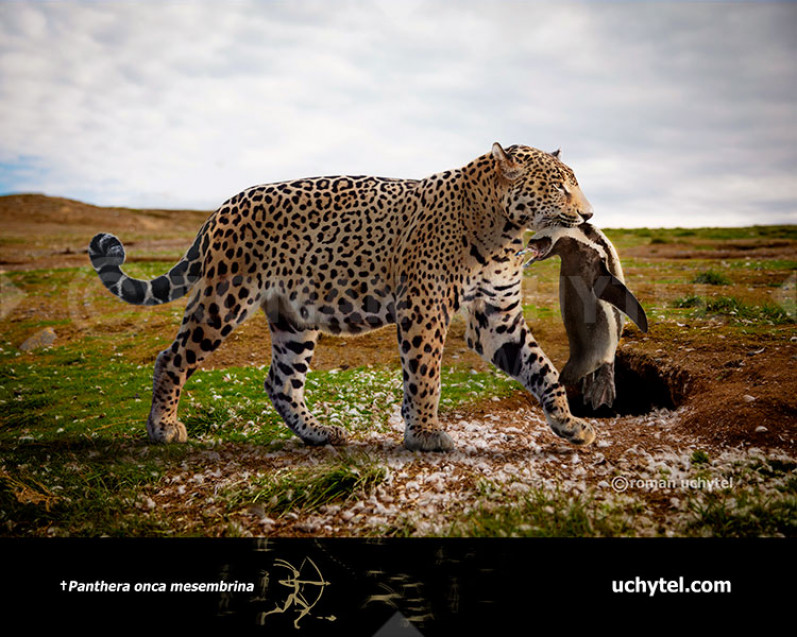
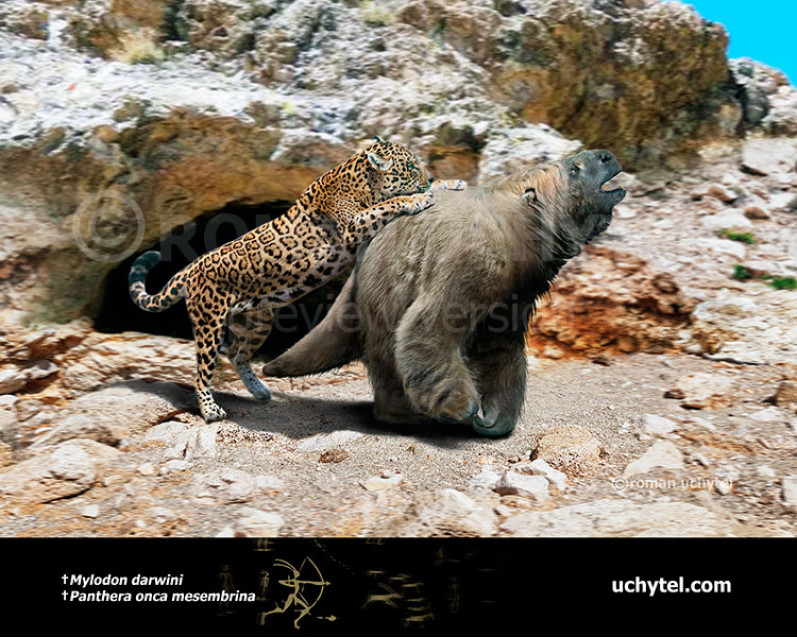
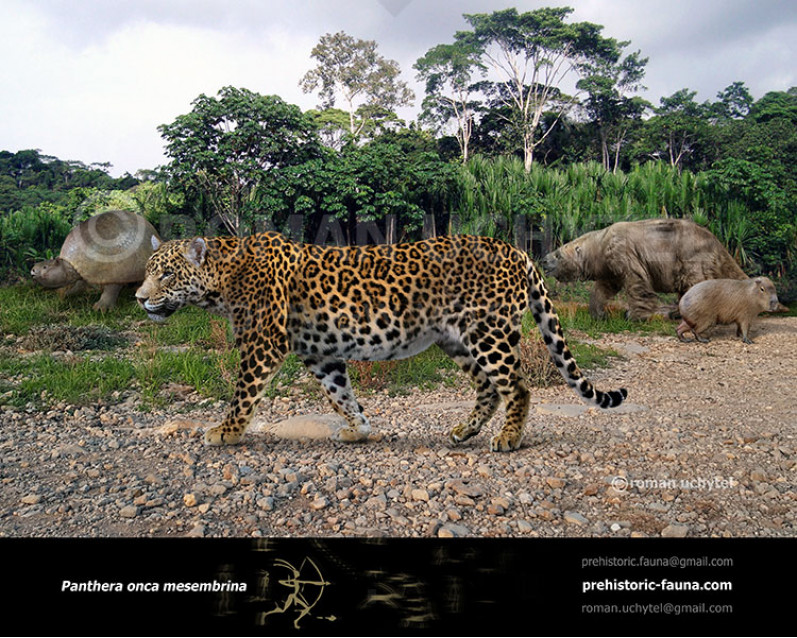

-1-797x638.jpg)
1-797x638.jpg)
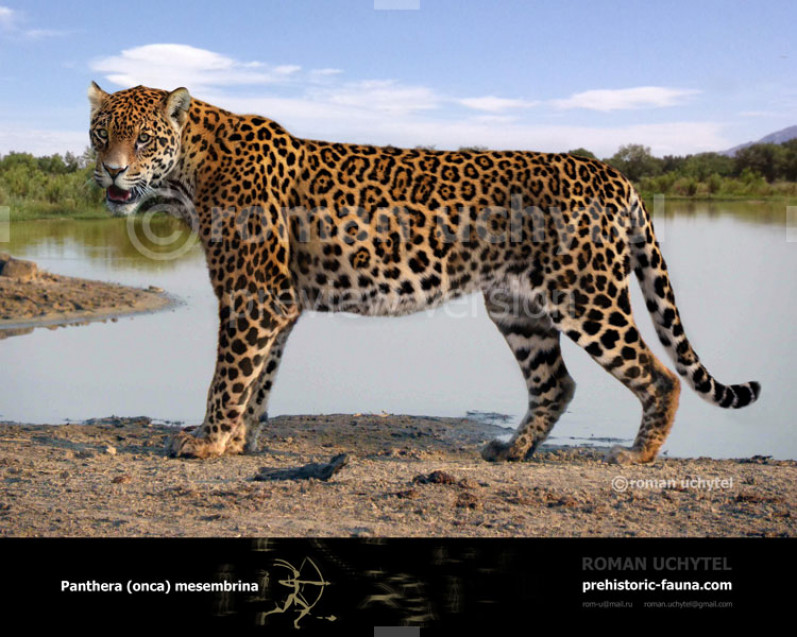
-3-797x638.jpg)
-797x638.jpg)




-1-70x56.jpg)
1-70x56.jpg)

-3-70x56.jpg)
-70x56.jpg)
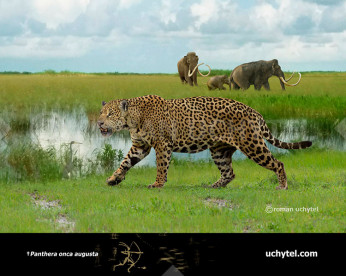
-346x277.jpg)
-346x277.jpg)
